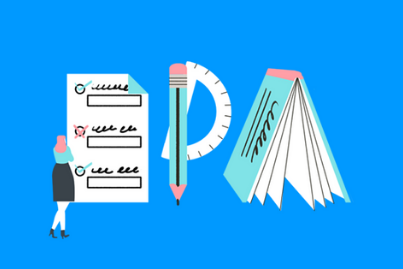Have attitudes towards the EPA changed?

The EPA created a ripple effect of changes that affected everyone in the sector – but almost a year on, what do people think now?
The EPA (end-point assessment) reflected a shift from assessing to learning that was felt by assessors in particular. They were worried about how this shift would affect their job, as they'd have to focus on mentoring learners, rather than assessing them. One year on, assessors are now more like mentors or coaches, working closely with employers to support apprentices and plan learning around the standards. Learners still keep a portfolio of evidence, so their mentors still need to plan activities, evaluate their work, send feedback and make sure they're ready to take the EPA.
It was thought that the move from continual assessment would be an issue for learners too. In the past, many apprentices chose vocational training over academic courses as it played to their practical strengths – so people thought learners would be put off by the introduction of a single, final assessment. In fact, as such a wide range of assessment methods can be used – such as observations or discussions – the EPA isn't so daunting for new starts. Jacqueline Hall from EUIAS – an employer-led end-point assessment body – said, 'apprentices value their achievement more now there's an EPA. It's their time to shine and they realise how much they've learnt.'
The apprenticeship reforms rocked the boat for training providers the most. They had to adapt to policy changes like the RoATP and new standards, as well as update how their entire organisation works. They've had to support their assessors, help them shift into their new roles, set new staff targets, and find an end-point assessment organisation (EPAO) to work with. Their apprentices also need to be assessed by a completely independent assessor – someone with no affiliations to their employer, training provider or themselves. This means training providers had to build new partnerships with EPAOs, and work with them to get apprentices through the EPA.
Providers have also had to change how their training is delivered on a day-to-day basis. Assessors still have to make sure apprentices learn the skills set out in the standard, but without actually assessing them. They've also had to prepare apprentices for the EPA by arranging mock tests and getting them through the gateway. It's a whole new world out there, but training providers have taken it in their stride and the EPA is starting to become the new norm.
One year on, we're doing okay. People across the sector have come together to dispel the myths and find solutions to all these niggly problems. Training providers are settling in with the new standards... employers are more involved than ever... the first apprentices have taken the EPA... and OneFile has rolled out a ton of features to help everyone manage the process.
To find out exactly how OneFile can help you manage all the apprenticeship reforms – from the EPA, to new standards to 20% off the job, download our new guide.
This article includes research and opinion sourced by OneFile at the time of publication. Things may have changed since then,
so this research is to be used at the reader's discretion. OneFile is not liable for any action taken based on this research.


